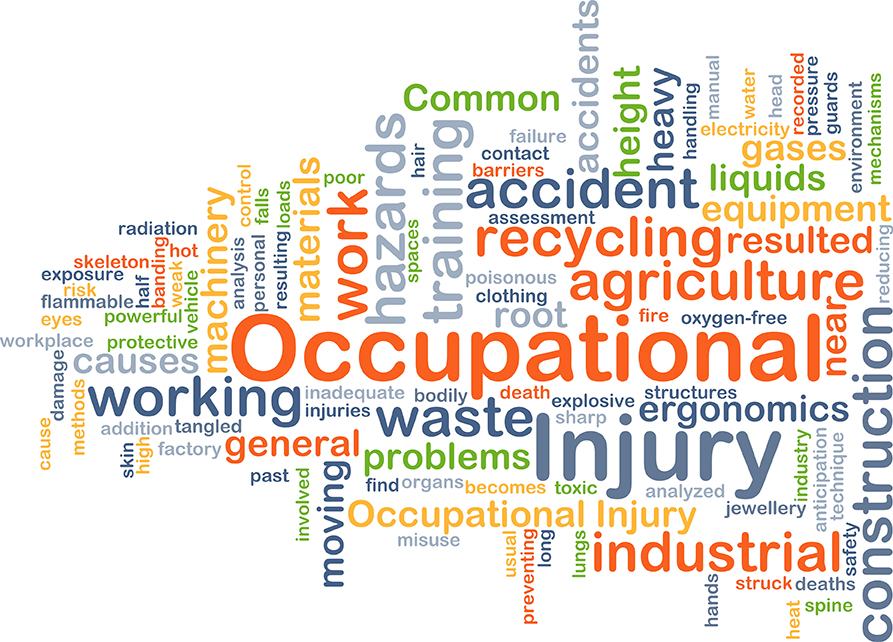The Most Frequently Misused Occupational Medicine Terms, Explained
 In the field of occupational health and safety, using precise language is essential. The words we choose to describe an employee's injury, recovery, and work ability are critical for workers' compensation claims and return-to-work plans. However, many key terms are often misunderstood or misused, leading to expensive mistakes and conflicts between employers, employees, and medical practitioners. This article aims to clarify the correct meanings and uses of the most critical and commonly confused terms in occupational medicine, promoting clearer communication and better outcomes.
In the field of occupational health and safety, using precise language is essential. The words we choose to describe an employee's injury, recovery, and work ability are critical for workers' compensation claims and return-to-work plans. However, many key terms are often misunderstood or misused, leading to expensive mistakes and conflicts between employers, employees, and medical practitioners. This article aims to clarify the correct meanings and uses of the most critical and commonly confused terms in occupational medicine, promoting clearer communication and better outcomes.
Different health assessments are appropriate in different circumstances. The names of the assessments can be confusing, so employers sometimes ask occupational medicine practitioners for the wrong evaluation.
Employers often misuse these four standard terms:
- Return to Work
- Fit for Duty
- Second Opinion
- Independent Medical Exam
“Some employers use the terms interchangeably, which can cause confusion among our practitioners,” says Robert Pedowitz, D.O., Vice President and Chief Medical Officer of Occupational Health and Safety at Hackensack Meridian Health. “They’re told that an employer requested a second opinion, but the employer really meant to request a return to work.”
These descriptions may help employers avoid confusion when requesting assessments:
Return to Work
When an employee is injured at work, the employer sends them to Team Health for an assessment. The worker may also see their private practitioner for treatment.
Once their physician tells them that they’re able to work again, the employee goes back to Team Health for a return-to-work assessment.
The Team Health occupational medicine practitioner examines the worker, reviews their job description, and determines whether they can perform their duties safely without any restrictions. If so, they’re cleared to return to work.
If the worker hasn’t completely recovered, they may be cleared to return to work with modified duty. After a few weeks of physical therapy or recuperation, the employee should be cleared to return to work without restrictions.
After an employee sustains a workplace injury, receives treatment and recuperates at home, their company typically sends them to an occupational medicine practitioner before they resume working, to determine whether they’re capable of performing their usual job duties.
Fit for Duty
Fitness for Duty evaluations are performed to assess an employee's physical or mental capacity to perform their job duties safely and effectively. This may be requested by the employer when there is concern about the employee's behavior or performance, or when the employee has difficulty performing their routine tasks, possibly due to medical or physical conditions. The occupational medicine practitioner will perform a detailed history and examination to determine if the employee can work safely or if there are any impairments/restrictions affecting their ability to perform their duties.
Second Opinion
Sometimes, patients with medical illnesses or injuries may seek a second opinion based on diagnosis or if not improving, to see if there are other options for treating their condition.
In occupational medicine, "second opinion” means if an employer believes the employee should be able to return to work, and there is potential concern that the employee has not been entirely truthful or committed to returning to full work duty, the employer may request a second opinion about whether the worker should be cleared to return to work without restrictions.
An employer might suspect that a worker isn’t being forthcoming about an injury if:
- They return to work with modified duty, but an observant manager notices that they appear to have recovered fully, based on their performance.
- A worker may post (or be tagged) on social media playing softball or doing other strenuous activities.
When the employer seeks a second opinion, they’re requesting a practitioner assessment to determine whether or not the worker’s delayed recovery from injury or illness is valid, and whether the worker may safely return to work. Though not required, it may be helpful to involve an attorney when considering obtaining a second opinion.
Independent Medical Exam (IME)
Sometimes, when an employee is sent for a return-to-work evaluation, the occupational medicine practitioner has a significantly different opinion from the worker’s physician. Their doctor may say that they aren’t able to return to work, but the occupational health practitioner may say that they are. This often happens in workers' comp cases.
When employer and employee disagree about physician assessments, an attorney can ask a judge to order an independent medical exam (IME). When it’s granted, a physician who isn’t affiliated with either party evaluates the patient and makes recommendations for the judge.
“The IME’s decision bears weight,” Dr. Pedowitz says. “They give their opinion about whether an employee is cleared to return to work.
The descriptions for the above-listed types of evaluations requested of occupational medicine practitioners will now make it easier in selecting the correct type of visit. If you have any questions, please feel free to contact us at hmworks@hmhn.org.

